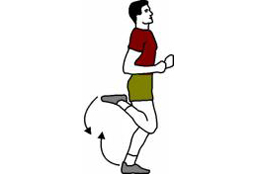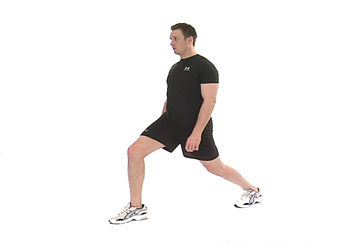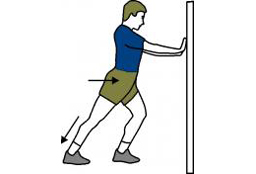Physical therapy in Elmhurst & Flushing for Skiing
Stretching is an essential part of cross country skiing. A good stretching routine can help to prevent injury, improve your exercise tolerance, and reduce muscle imbalances. The following stretching program is designed for cross country skiers who do not have any current injuries or individual stretching needs. If you have an injury, or a specific mechanical imbalance that may be holding back your skiing performance, your physical therapist at Energize Physical Therapy can design an individual stretching program specifically for you.
When is the Best Time to Stretch?
When your muscles are warm and relaxed! Cross country skiing is a dynamic sport so you'll need both dynamic and static stretching. Dynamic stretches form part of your pre-training or pre-competition warm-up. Static stretches can be included at the end of your cool down or at other times to improve your overall fitness and flexibility.
Pre-training or pre-competition:
- General warm up (5-10 minutes). The aim of a general warm-up is to get the blood flowing to all parts of the body to be used during skiing. This portion of the warm up may include light jogging, jumping jacks or running on the spot outdoors. More competitive athletes may choose to ride a stationary cycle or use the treadmill indoors immediately before gearing up for cross country skiing. Being an outdoor winter sport, the general body warm up is particularly important to ensure your muscles are prepared to work in the cold environment. Once you start cross country skiing your body will remain warm, however be mindful of the breaks you take while skiing. The body cools down quickly in cool weather and another warm up period may be required if too long of a break is taken.
- Dynamic stretching. Completed immediately after your general body warm up or incorporated into the general body warm up. Gradually the speed and intensity of your movement during these stretches is increased. See below for stretches.
- Technical and speed warm up. This includes high intensity, cross country specific drills such as the simulated stationary arm swinging or leg motion needed to negotiate hills. You may choose to gear up to do these drills or you can do some drills without equipment. Once you are geared up a few short distance sprints and climbs of mini hills should be included. Before competitions, however, these sprints and hills should be kept very short with adequate recovery to ensure you are not fatigued before the competition.
The pre-training or competition warm up, including the dynamic stretching program below, will take about 30-40 minutes to complete so be sure to factor this time into your training or competition day schedule.
Post-training or competition:
- Cool down. A cool down allows the body, in particular the cardiovascular system, to gradually return to its resting state. A cool-down reduces your chances of becoming dizzy or fainting after exercise, allows any waste products that build up from exercise such as lactic acid to dissipate and may reduce your chance of having Delayed Onset Muscle Soreness (DOMS). Cool down by gradually reducing your intensity of movement. Slowing your skiing pace right down or even walking once you have removed your gear would be an appropriate way to cool down. Competitive athletes may choose to head indoors and use the stationary bike for 5-10 minutes.
- Static stretches: Commence your stretching regime directly after a short cool-down, before the muscles have cooled completely. Static stretching at this time helps to improve any flexibility deficits that may be present.
Rules for Dynamic Stretching:
- Warm up your muscles first, then stretch while your muscles are still warm.
- Move through your range of movement, keeping control of the movement with your muscles. Do not allow momentum to control the movement by "flinging" or "throwing" your body parts around.
- You may feel light resistance in your muscles, but you should never feel pain during a stretch.
- Start with slow, low-intensity movements, and gradually progress to full-speed, sport-like movements.
- Repeat the movements for 20-30 seconds. Repeat the stretch 2-3 times.
Rules for Static Stretching:
- Warm up the muscles first.
- Slowly take your muscles to the end of their range. You will feel slight resistance in the muscle, but you should never feel pain during a stretch.
- Hold the stretch in a static position. Do not bounce.
- Hold each stretch for at least 20 seconds; longer is better. Repeat each stretch 3-4 times.
Examples of Dynamic Stretches:
Arm Circles

Leg Swings Forward and Back

Leg Swings Sideways

Leg Curls

Lunges

Static Stretches
Back Rotation Stretch

Lower Back Stretch for Extension

Lower Back Stretch for Flexion

Chest Stretch

Hamstring stretch

Quadriceps stretch

Hip Flexor Stretch

Groin Stretch

Calf Stretch

Gluteal Stretch

